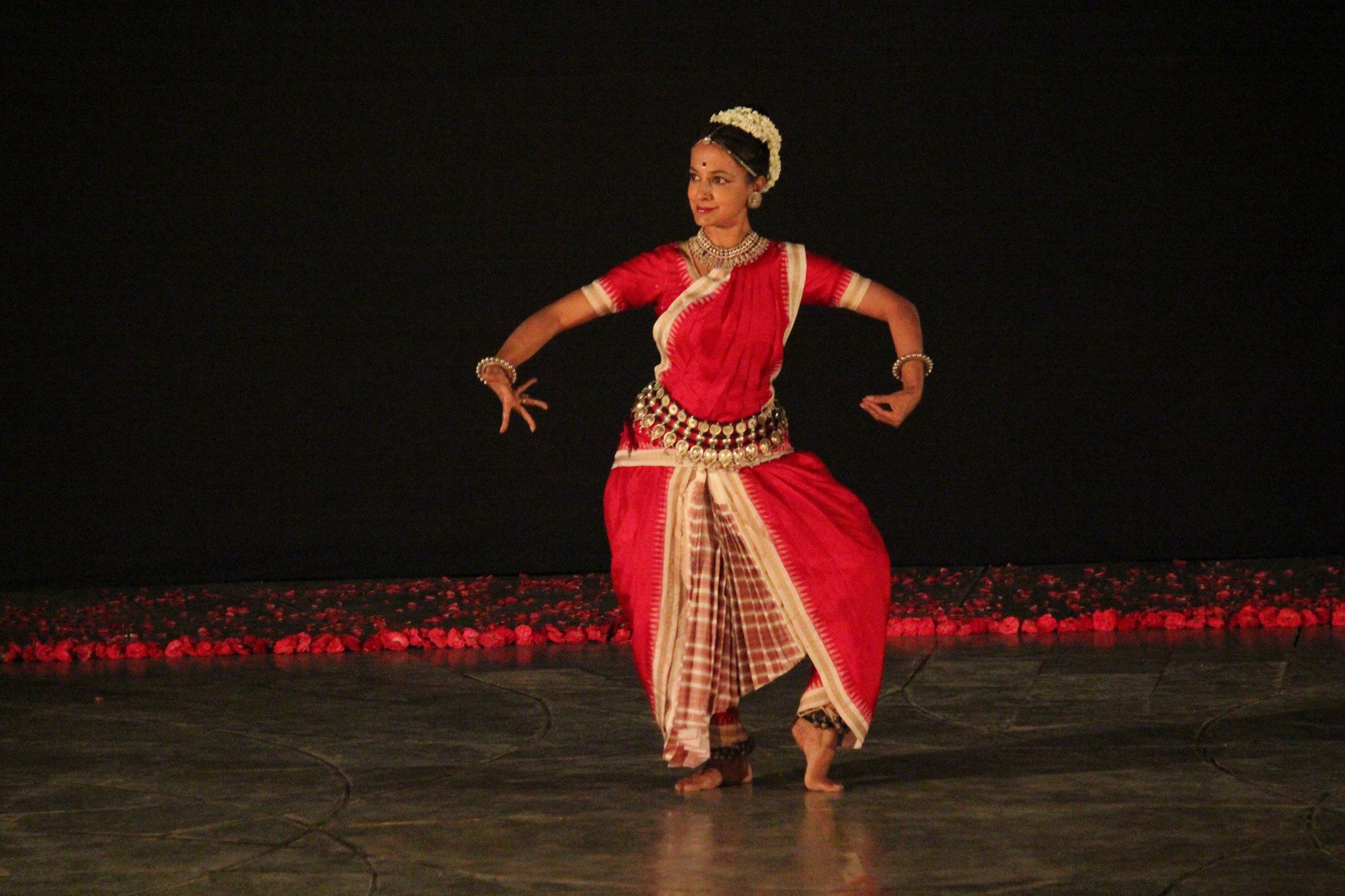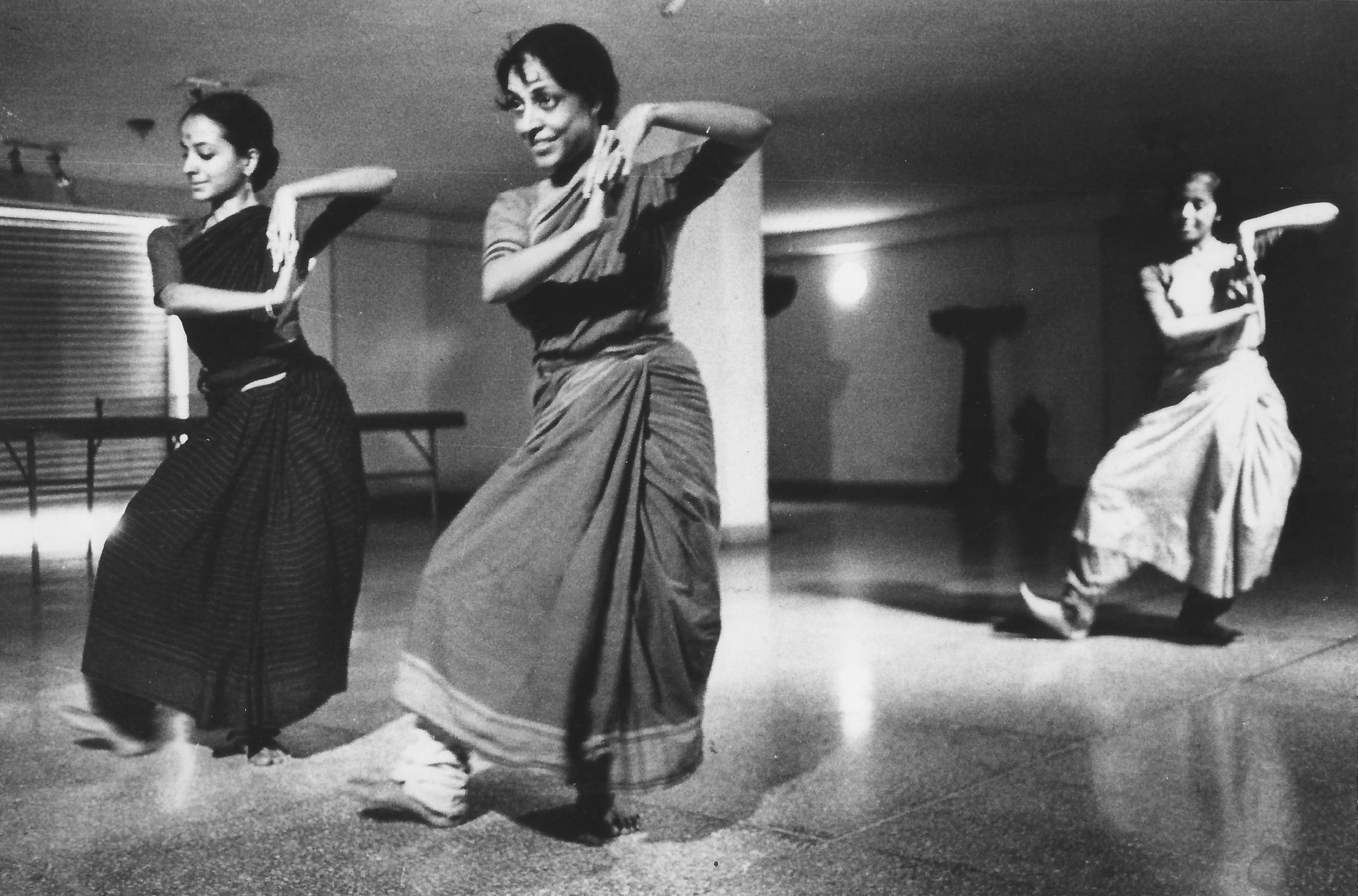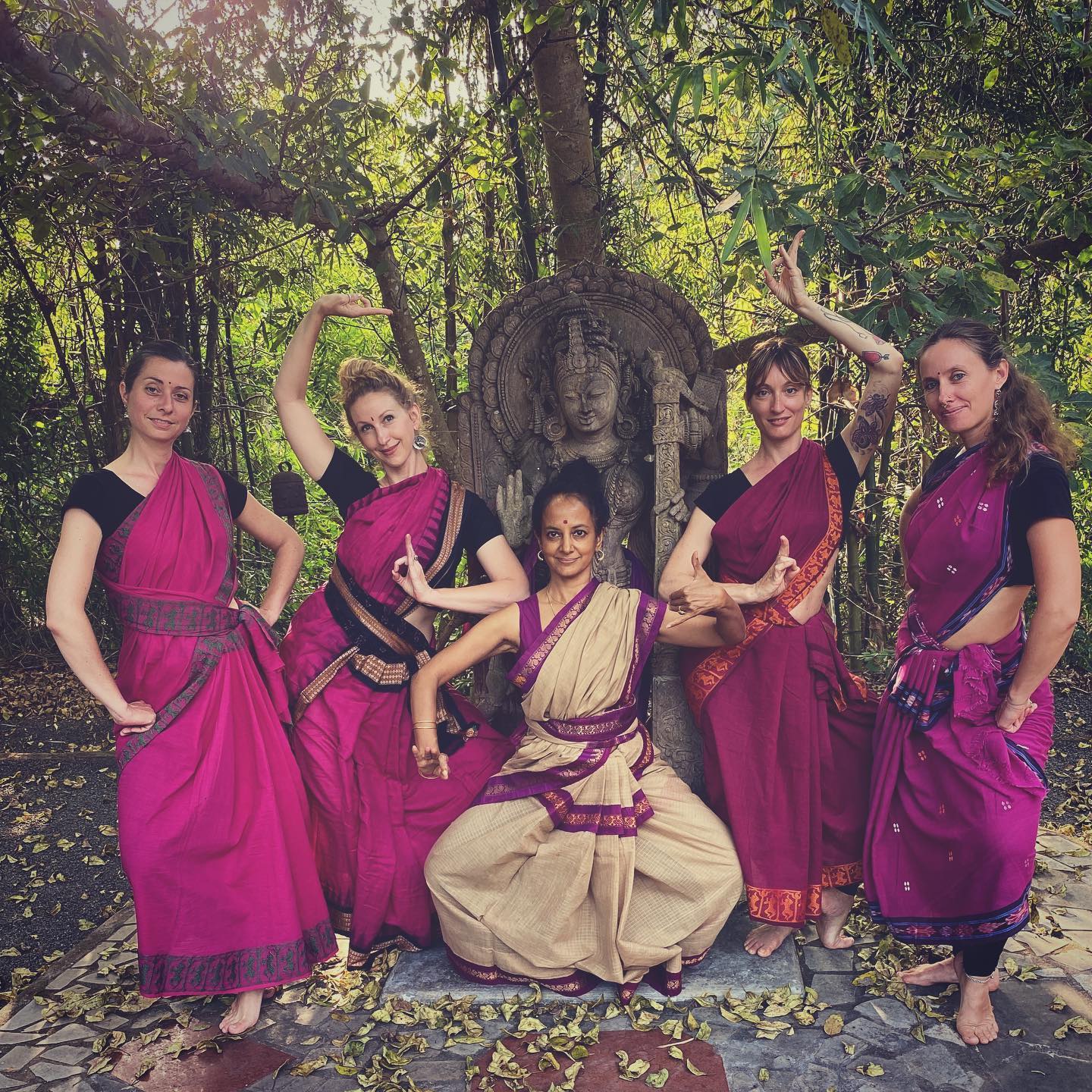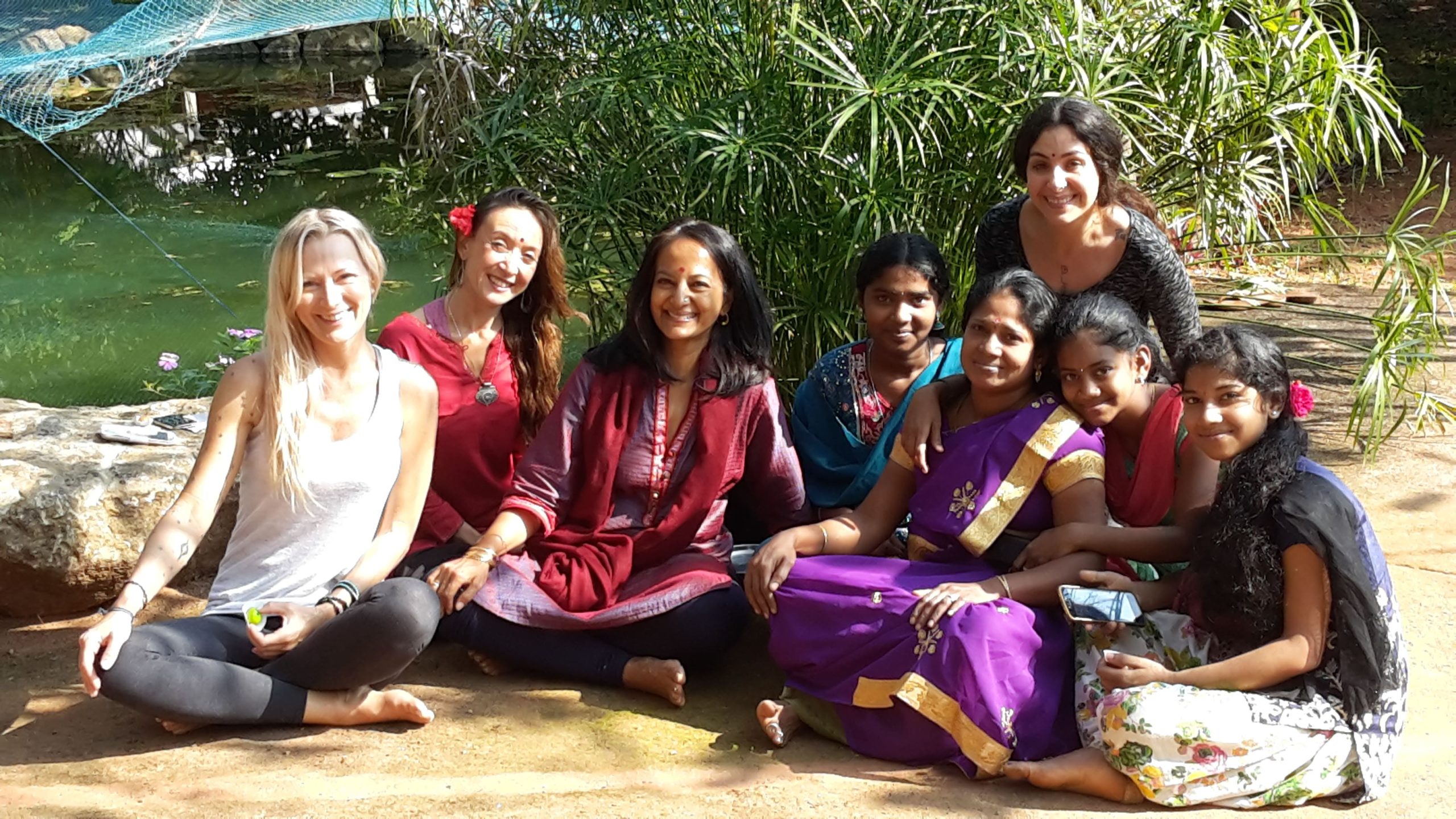(May 2, 2024) Many Indian dancers would agree that Indian classical dances and yoga have similar roots and tales associated with them. From the mudras to the various positions and alignments, many things are similar in yoga and our classical dances. However, over the period of time, people have forgotten the connection between dance and yoga. Eminent Odissi artiste Rekha Tandon, is working on re-bridging the gap between Indian classical dance and yoga.

Odissi artiste Rekha Tandon
Living in a quaint and beautiful house in Auroville, which is situated near Puducherry, the Odissi dancer hosts artistes from across the globe for residencies and workshops. She has presented performances at many festivals in different parts of the world, including at the Quay Theatre, The Lowry, Manchester (2007), Mary’s Gallery, Sydney (2012), Tantrutsav, Kalarigram (2018) and Pondicherry Heritage Festival (2019).
View this post on Instagram
An author of the book of Dance as Yoga: The Spirit and Technique Odissi, Rekha explains that yoga has been the fundamental building block of Indian art for centuries. “In essence, yoga is the union of matter and spirit. The process of refining any body movement skills and aspiring for excellence, is by itself very naturally ‘yogic’,” shares the artiste during a conversation with Global Indian, adding, “Yoga has made such a strong impact on global consciousness, and all Indian classical dance forms embody yoga. This integral connection will acquire more widespread acknowledgment and as it does, I am sure more people will gravitate towards them.”
Born to dance
Born in Karachi, Pakistan, well-known Odissi dancer Rekha Tandon is shaping Indian classical dance – Odissi – for a contemporary world. As her father was working with the Indian Foreign Services, Rekha lived in various countries, including Germany, Belgium, and Egypt. Moving from one country to the other, if there was one thing that stuck with Rekha, it was dancing. “I loved to dance even as a child,” shares the artiste, adding, “I was introduced to various Indian classical dances, such as Bharatnatyam, Kathak, and Khathakali in school. In fact, when I lived in Cairo, I even learned western ballet.”

Rekha with Padmashree Madhavi Mudgal, in 1985
However, the family was struck with tragedy when the artiste’s father passed away in a glider crash, in 1981. The dancer’s mother, who had been a housewife until then, started working India Tourism Development Corporation and later also worked for the former Prime Minister of India, Rajiv Gandhi. The family moved to Delhi, and it was in this city that Rekha fell in love with Odissi.
“I was about 15 years old, and during an event, I saw eminent dancer Kiran Segal perform. Although I had been dancing for about six to seven years by then, I was transfixed by the lyrical quality of her performance, It seemed to combine contrasts effortlessly — strong, defined lower body footwork with a very fluid, curvilinear upper body that was perfectly amalgamated,” shares the artiste, who soon started learning Odissi, under Guru Surendra Nath Jena – whose dance style incorporated the various aspects of Indian culture, such as temple sculpture, ancient dance, Sanskrit and vernacular literature, yoga, traditional painting, manuscripts, and philosophy.

Rekha Tandon with other Odissi artistes
“Initially it was more like something I did in the afternoons, after school. But slowly my focus changed and dancing became much more than just a hobby for me,” shares the artiste, who pursued a bachelor’s degree in planning and architecture.
A dance academician
After six years of practice under Guru Surendra Nath Jena, a 23-year-old Rekha started rehearsing at the Gandharva Mahavidyalaya, under Padma Shri Madhavi Mudgal. “Though my mother was very supportive, I still had a lot of pressure to look for a job. So, in 1985 after my graduation, I apprenticed under an architect, who was working with noted designer Rajeev Sethi. We worked on the event Festivals of India. However, I think dancing was where my soul was,” laughs the artiste, who later did a master’s in history of art, from the National Museum Institute of History of Art, Conservation and Museology between 1990 and 1994.

Rekha at Skandavan with her students
While Rekha had been practicing Odissi and presenting solo performances at many festivals in different parts of the world since 1985, she wanted to learn more about the history of Indian dances and understand the culture better. So, in 1995 the dancer started pursuing a PhD in Dance Studies from the Trinity Laban – United Kingdom’s only conservatoire of music and contemporary dance. It was here that the dancer met her now-husband, Michael Weston, who is a musician.
As the artiste studied and researched at the centre about how the Indian dances were connected to the temples, yoga, and philosophy, Rekha was also working with the kids trained in Gotipua dance in Bhubaneswar, Odisha. In 1997, the dancer co-founded Dance Routes with her husband, to help these kids slow down their acrobatics and learn new choreography.
View this post on Instagram
Explaining her work with the Gotipua dancers, Rekha shares, “Gotipua is basically a traditional dance form, which is the precursor of Odissi. These kids have been performing in the courtyards of the Hindu temples since 16th century. It has been performed in Orissa for centuries by young boys, who dress as women to praise Jagannath and Krishna. Once they become fully mature at the age of 14 or 15, they stop dancing. So much skill was invested in 10 years of their life. However, they eventually were jettisoned from this tradition and had to find alternative sources of income. Our work involved developing their skills further and creating productions that could be staged in cities.”
Living in the lap of nature
The artiste first visited the beautiful Auroville – which she now calls home – for a workshop, along with her husband. “It was during our third visit to Auroville that we decided to make it our base. We have beautiful rooms for foreign visitors, who come for the residencies. I also have a few students from Auroville, and Puducherry, whom I teach Odissi.”
Over the last few years, Rekha and her husband have documented, researched, and produced DVDs in connection with the art form. Shares the artiste, “We have this interesting history folk tradition being revised as classical tradition. And, it would be tragic to just tap into the final product of Odissi and not look back at the elements that went into it. The focus of the hour is while learning Odissi, being aware of the resources that went into building it right from the beginning.”
Giving an insight into her world, the artiste shares, “I live and work mostly from a studio residence in Skandavan which is a beautiful two-acre garden near Auroville, with my husband, Michael, two dogs, a cat, several chickens, and two big fishponds. We inevitably always have guests or students living on the premises as well. So, every day is always busy from very early morning onwards. When I can, I enjoy watching movies, reading, or just being with the animals.”




